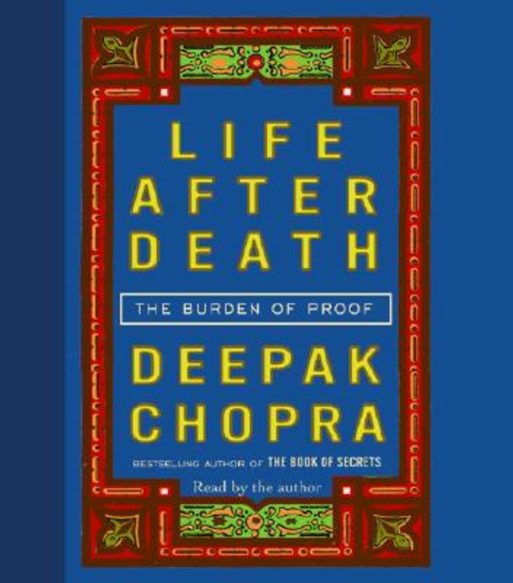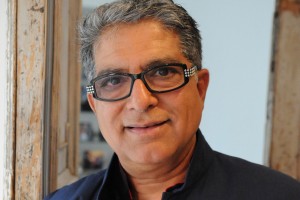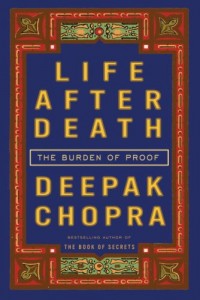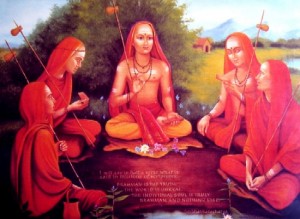 It is challenging, this whole living in the face of death thing. Our consciousness — which takes in all the incoming stimuli from the internal and external environments at whirling speeds and processes it into a cohesive structure we call self — has to grapple with shifting sands as it builds a consistent story line. We live. We change. We die. And we can’t always make sense of those three things no matter how hard we try.
It is challenging, this whole living in the face of death thing. Our consciousness — which takes in all the incoming stimuli from the internal and external environments at whirling speeds and processes it into a cohesive structure we call self — has to grapple with shifting sands as it builds a consistent story line. We live. We change. We die. And we can’t always make sense of those three things no matter how hard we try.
The question of what happens to our consciousness when our physical bodies are gone lingers, and since we can’t necessarily close that gap in our knowledge with direct experience, this awareness stings.
The question of what happens to our consciousness when our physical bodies are gone lingers, and since we can’t necessarily close that gap in our knowledge with direct experience, this awareness stings. Many systems of thought have been built in order to close that gap to offer solace for those dealing with loss or for those who are facing their own death or diminishing awareness.
Enter Deepak Chopra’s book, Life After Death: The Burden of Proof, which aims to provide insight into a unifying theory of consciousness that underlies the universe, and in this instance, attempts to demonstrate that while our physical bodies might die, our consciousness returns to an all-pervasive source, which is called the Akashic field, or Akasha.
Chopra is a well known pop culture figure (and is also a trained endocrinologist turned alternative medicine practitioner) who has made a name for himself, however controversially, by overlaying materialist-based scientific ideas onto Eastern Indian philosophy in an effort to prove that his philosophy is fact. His philosophy is idealistic, following the belief that matter comes from consciousness, and builds from Vedic texts.
Life After Death: The Burden of Proof continues the idealist, Vedic trajectory by “showing” that we are consciousness experienced momentarily as matter, and when our physical matter is no longer we return to the Akashic field. The Akashic field is a component of a belief system Chopra pulls from Vedanta, a knowledge system formed over centuries by Rishis, who were spiritual seers in the Vedic tradition. Chopra states that Vedanta is not a religion, rather it is a study of and on consciousness, a spiritual philosophy. So Chopra plots consciousness by leveraging the Rishis’ knowledge system.
The book consists of two parts. The first part, about 8/10ths of the content, is a series of meandering discussions on ghosts, consciousness, near-death experiences and the journey to the Akashic field.
The fundamental premise of the meandering is that when our physical bodies die, our consciousness returns to Akasha by following a story line determined by the belief structures established in our lifetime (whether Muslim, Christian, Hindu, atheist, etc…).
Just like life, you see what you believe when you die, then your soul continues on past a place heavy with symbolism and enters a larger force of consciousness, which is limitless.
This story as Chopra tells it allows for multiple belief systems to hold merit, since the process involves the soul moving through its own conscious constructions of the afterlife, only to land in Akasha. Just like life, you see what you believe when you die, then your soul continues on past a place heavy with symbolism and enters a larger force of consciousness, which is limitless.
This book is a book of stories, and taken this way it is innocuous, which is where I think it should stay.
In the second part of the book, Chopra tries to make the case for the reality of the Akashic field by pulling on his old standby, quantum physics. The stories told here just don’t hold up. Whereas folklore is charming and comforting as it is translated by different tongues, science doesn’t work as well that way. Scientific thought relies on building and testing concepts and cross-referencing knowledge. Otherwise it falls prey to the whims of Wikipedia entries and editors.
The discourse Chopra weaves is disorienting, with whirlpools of thought that sometimes still swirl into moments of transcendent beauty. For instance, “…death is a fulfillment of our purpose here on earth. Every culture offers a deep faith that this is true, but ours demands a higher standard of proof. I think proof exists, but it cannot be physical, since by definition death brings physical life to an end.”
I love the teleological poetry of this statement. Yet, it warps towards an apogee that in the end I am not convinced by. The proof doesn’t hold up, and I am not sure where to put my finger on where it fails, because, like the Akashic field, it seems to be everywhere. I don’t think there is much to hold on to, and maybe that is the point.
Ditch the proof, Deepak, run with the stories…there is no burden in storytelling, only solace.

 “Life After Death The Burden of Proof” by Deepak Chopra
“Life After Death The Burden of Proof” by Deepak Chopra





 The Spiritual Symbolism of Cardinals
The Spiritual Symbolism of Cardinals
 Meaning-Focused Grief Therapy: Imaginal Dialogues with the Deceased
Meaning-Focused Grief Therapy: Imaginal Dialogues with the Deceased
 Flawed Kidney Function Test Discriminated Against Black Patients
Flawed Kidney Function Test Discriminated Against Black Patients














